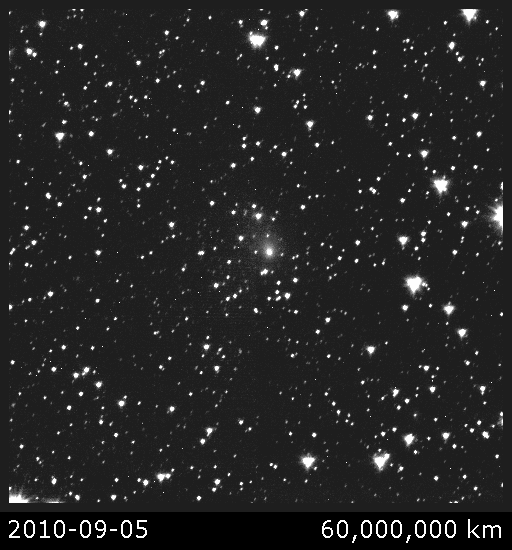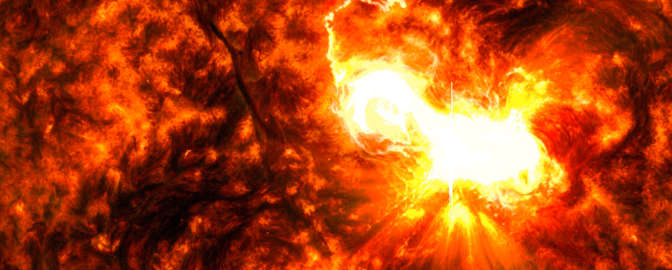Deep Impact approaching Hartley 2

Written by
Emily Lakdawalla
September 22, 2010
The Deep Impact spacecraft team has released a third image from their approach to comet Hartley 2, and for me, three images is an invitation to make an animation! (To be honest, two is enough for me to want to make an animation, but I didn't have time last week.) So, here you go: comet Hartley 2 getting brighter against a background of stars as Deep Impact slowly closes in for its planned November 4 flyby encounter with the comet:

As the Deep Impact team releases more images, I will continuously update this animation. So you can bookmark this blog entry if you want to come back and see it updated, though I'm sure I'll also repost it fresh from time to time. It will be really fun to watch the fuzz of Hartley 2's coma grow in size and begin to obscure all those background stars.
I tried to match the brightness and contrast of the three frames released so far as best as I could. I could match stars in the two star fields from the images dated September 13 and September 20, but not from the first image dated September 5 to the September 13 image. I'm not sure if the spacecraft rotated and I just can't match things up or if it's because of the way that the team set the brightness and contrast on the versions of the images that they released to the public. Elizabeth Warner, who's doing the public communication for Deep Impact's Hartley 2 encounter, commented on the September 20 image release that "this week we had a different person do the post-processing of the combined stacked image. The 'min' set point and 'range' affect the on-screen appearance so it is done uniquely for each image. Later on, as we have more images, we will likely go back and re-do the post-processing on some of these early images using a more universal set of 'min' and 'range' values." If they do that, I'll redo my processing of the earlier images in this animation.
Breakthrough research starts with YOU!
Your support will empower the next round of STEP grant winners. Make your gift today to fund tomorrow's promising science and technology projects.
Donate

 Explore Worlds
Explore Worlds Find Life
Find Life Defend Earth
Defend Earth

